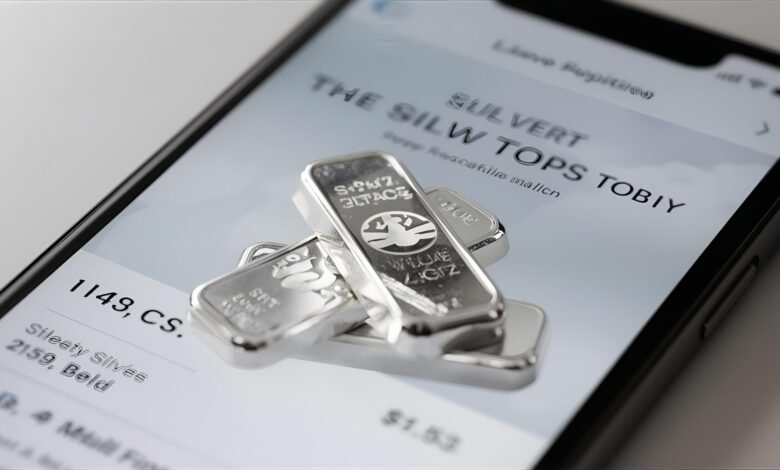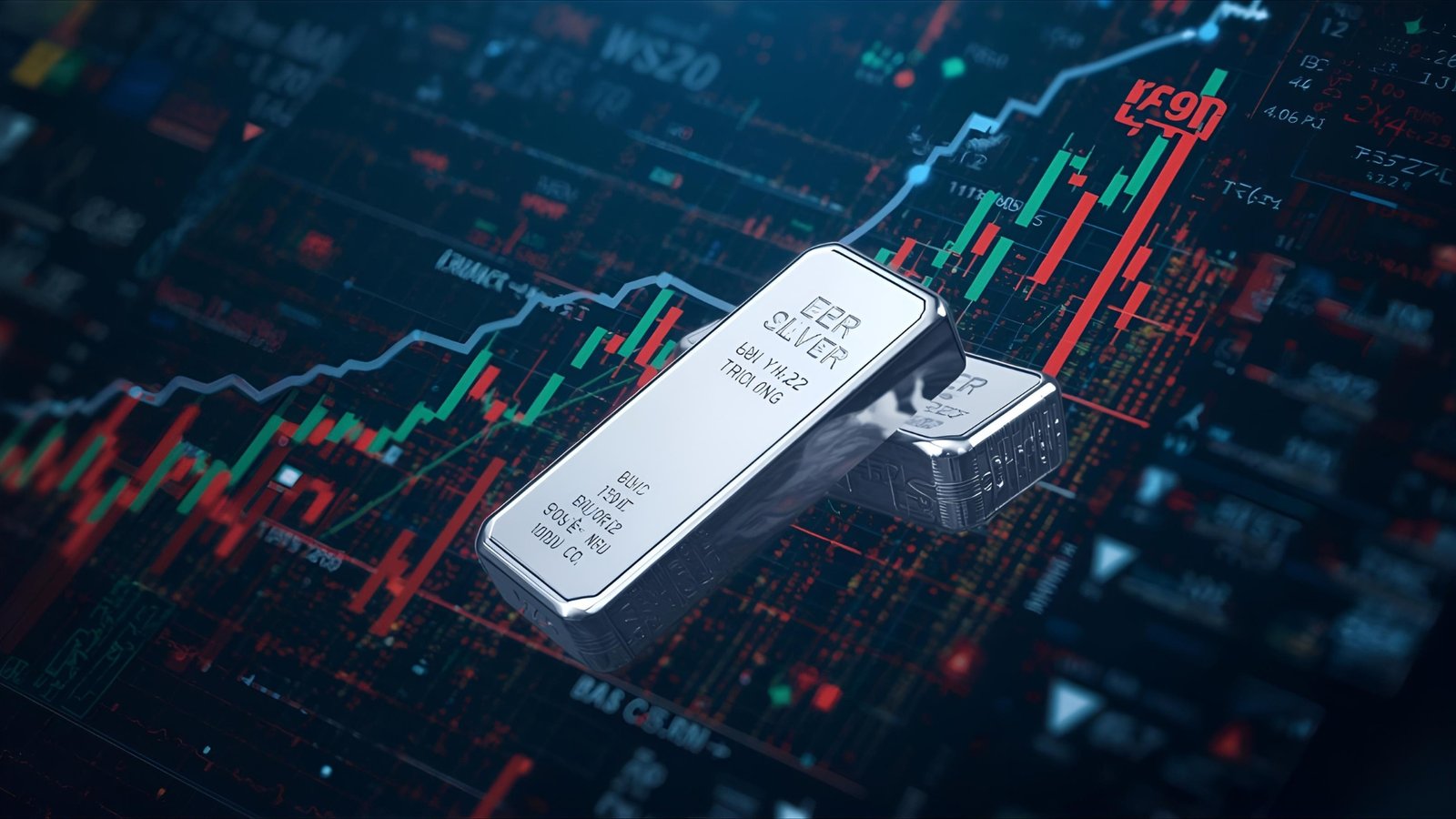
If you’ve ever searched for the spot price of silver today, you’re already thinking like a pro. Spot price is the heartbeat of the silver market—the live, tradable value of one troy ounce for immediate delivery. Whether you stack coins, trade futures, or watch XAG/USD on your phone, understanding how and why silver moves can save you money and sharpen your timing.
In this in-depth guide, we’ll unpack what “spot” truly means, how the price is formed minute by minute, and the global forces that push it up or down. We’ll also cover practical tactics for reading charts, choosing between coins, bars, ETFs, or futures, and avoiding common pitfalls like paying too much in premiums. By the end, you’ll know exactly what influences the spot price of silver today and how to apply that knowledge to real decisions—without overcomplicating the process.
Along the way, we’ll weave in essential concepts like troy ounces, XAG/USD, LBMA, COMEX, monetary policy, and inflation hedging. You’ll see how professional traders think and how long-term investors keep calm through volatility. Most importantly, you’ll learn to translate the price on the screen into action.
What Is the Spot Price of Silver Today?
At its core, the spot price is the current market value for immediate settlement—a live benchmark derived from the most liquid venues where silver changes hands. When you check a charting app or a dealer’s website, that number is what market participants are willing to pay or receive right now. It updates constantly during active trading hours, reflecting a mosaic of exchange quotes, OTC trades, and market-maker spreads. Think of it as the consensus price of the next ounce—before taxes, before shipping, and before any retail markup.
How Is the Spot Price of Silver Determined?
The spot price of silver today emerges from a global ecosystem. The London Bullion Market Association (LBMA) governs standards in the over-the-counter market. At the same time, futures contracts on COMEX (a division of the CME Group) provide deep liquidity and transparent pricing. Dealers, refiners, industrial users, and funds all rely on these venues. Quotes in U.S. dollars dominate, but silver is priced in many currencies. The result is a continuously negotiated number: the tightest bid-ask spread available among professional participants.
Unlike a single “official” quote, spot is an aggregate reflection of where the market actually trades. When you refresh your screen and see the spot price of silver today tick up a few cents, it’s the sum of countless micro-decisions—hedges by miners, rebalancing by ETFs, speculative orders, and industrial procurement.
Why the Spot Price Differs from What You Pay
If you buy a coin or bar, you’ll notice the sale price exceeds the spot price. The difference is the premium, which covers manufacturing, distribution, dealer costs, and market demand for specific products. Highly recognizable coins, such as American Silver Eagles or Maple Leafs, often carry higher premiums than generic rounds or bars. In tight markets—when demand surges or supply chains clog—premiums can swell even if the spot price of silver today barely moves. Wise buyers track both the live price and typical premiums to judge value.
Key Factors That Move the Spot Price of Silver Today

Monetary Policy and the U.S. Dollar
Silver trades globally in dollars. When the dollar strengthens on rising interest-rate expectations, commodities priced in dollars often face downward pressure. Conversely, when central banks pivot dovish, real yields fall and precious metals—including silver—can catch a bid. Traders monitor Federal Reserve statements, inflation prints, and employment data because these factors influence real yields and risk appetite, which in turn affect the spot price of silver today.
Inflation and Safe-Haven Demand
Silver straddles two worlds: it’s both an industrial metal and a monetary metal. During inflationary flare-ups, investors sometimes seek shelter in hard assets. Gold usually moves first, but silver tends to respond with a higher beta—meaning it can swing more dramatically. When inflation fears combine with strong manufacturing, the spot price of silver today can accelerate quickly.
Industrial Demand: Solar, Electronics, and EVs
Silver’s unique properties—conductivity, reflectivity, and antimicrobial behavior—make it indispensable in photovoltaics, electronics, and increasingly in electric vehicles. Growth in these sectors expands baseline demand. If factories ramp up or if policy incentives boost solar installations, underlying consumption can support higher prices even when speculative interest is muted.
Mining Supply and Recycling
On the supply side, silver is often produced as a byproduct of mining for lead, zinc, copper, or gold. That means silver output doesn’t always respond quickly to price changes. Recycled silver from electronics, jewelry, and industrial scrap can help, but the flows lag the price. When supply tightens relative to demand, the spot price of silver today tends to firm up.
Investor Flows and ETFs
Exchange-traded funds add another layer. When ETF holdings rise, custodians may need to source metal or hedge exposure, which can lift the spot price of silver today. Conversely, outflows can pressure prices. Savvy investors track ETF flows as a real-time sentiment gauge.
Reading the Silver Chart Like a Pro
Timeframes and Trends
A helpful way to demystify the spot price of silver today is to read it across multiple time frames. On a daily chart, identify the primary trend using a 50- and 200-day moving average. If the 50-day sits above the 200-day and both slope upward, momentum favors the bulls. Weekly charts filter noise and help you see the bigger cycle—bull markets in silver tend to unfold in stair-steps, punctuated by sharp consolidations.
Support, Resistance, and Volume
Mark recent swing highs and lows. When price revisits a former ceiling after breaking above it, that level can act as support. High-volume breakouts through resistance often precede trend extensions. While volume in OTC markets is opaque, futures volume on COMEX gives a reasonable read on participation. If the spot price of silver today rallies on expanding volume, the move has stronger conviction.
Momentum and Mean Reversion
Momentum indicators like RSI or MACD help distinguish trend from chop. Silver is volatile; it can overshoot in both directions, then mean-revert toward a moving average. Traders combine momentum with structure: buy pullbacks to support in an uptrend, take partial profits into resistance, and always respect risk.
Silver vs. Gold: The Ratio That Matters
The gold-silver ratio measures how many ounces of silver equal one ounce of gold. Historically, extremes in the ratio sometimes foreshadow mean reversion. When the ratio stretches high, silver may be undervalued relative to gold, though timing a reversion is tricky. Monitoring this relationship alongside the spot price of silver today offers context for relative value trades or portfolio rebalancing.
Practical Ways to Get Exposure
Physical Coins and Bars
Buying physical gives you direct, tangible exposure, but it comes with premiums, shipping, and storage. Choose reputable dealers, compare premiums across products, and understand buyback policies. Keep invoices and consider secure storage options. For many investors, a blend of sovereign coins and low-premium bars strikes a balance between recognizability and cost efficiency.
ETFs and Mutual Funds
For convenience, silver ETFs track spot prices with fewer fees, offering intraday liquidity and easy allocation inside brokerage accounts. They eliminate storage logistics and make position sizing straightforward. However, you trade away the numismatic and privacy aspects of physical. If your goal is to mirror the spot price of silver today with minimal friction, ETFs are an efficient way to do so.
Futures and Options
Active traders may prefer COMEX futures and options for leverage, precise hedging, and deep liquidity. Futures demand risk discipline—mark-to-market swings can be substantial. Options add flexibility, letting you define risk or monetize volatility. When used judiciously, derivatives offer powerful tools to express views on the spot price of silver today without moving physical metal.
Managing Risk in a Volatile Metal
Position Sizing and Stop-Losses
Silver’s volatility is both opportunity and risk—right-size positions so a routine swing doesn’t jeopardize your plan. Pre-define exits with stop-losses or mental thresholds. If you’re stacking physical, your “stop” may be temporal—continuing to dollar-cost average as long as your thesis holds.
Diversification and Time Horizons
Blend silver with other assets so a rough patch doesn’t dominate your portfolio. Clarify whether you’re a trader seeking to capture moves in the spot price of silver today, or an investor building a multi-year inflation hedge. Your timeframe dictates your tactics, your tools, and your tolerance for drawdowns.
Premiums, Spreads, and the True Cost of Ownership

Understanding Premium Dynamics
When collecting quotes, distinguish the spot price from the delivered price. Premiums fluctuate with mint output, dealer inventory, and retail demand. A rush into bullion can push popular coin premiums well above historical norms. Generic bars usually carry lower markups, making them attractive for maximizing ounces per dollar when the spot price of silver today presents value.
Selling Back: Know Your Exit
The other side of ownership is liquidity. Ask dealers for buyback quotes and terms now—not later. A tight spread between their buy and sell prices suggests stronger liquidity. If you stack coins that command higher resale demand, you might recover more of the premium when you sell, especially in supply squeezes.
Macroeconomic Scenarios to Watch
Soft Landing vs. Recession
In a soft-landing scenario—slower growth but no contraction—silver may drift, tracking industrial activity and real yields. In a recession, central banks often ease policy; lower real rates and safe-haven flows can support precious metals. The spot price of silver today reacts differently depending on whether growth or policy dominates headlines.
Inflation Surprise vs. Disinflation
If inflation proves sticky or re-accelerates, real yields can drop relative to expectations, often supporting metals. Prolonged disinflation, by contrast, may weigh on silver unless industrial demand offsets it. Macro surprises matter; silver’s dual identity means it can respond to both factory orders and central-bank rhetoric—sometimes in the same week.
Technical Playbook for Today’s Market
Identify the Dominant Trend First
Before trading, ask: Is the spot price of silver today trending or ranging? In a trend, lean into higher highs and higher lows, using moving averages as dynamic guides. In a range, fade extremes and look for mean reversion back toward the middle of the band.
Use Confluence
Stronger setups occur when multiple signals align—say price pulls back to a rising 50-day average, at a prior breakout level, while momentum resets from overbought to neutral. Confluence doesn’t guarantee success; it simply tilts probabilities your way.
Respect Event Risk
Scheduled announcements—CPI, jobs reports, central-bank decisions—can spark abrupt repricing. Decide in advance whether you’ll hold through the event or stand aside. The spot price of silver today can gap on headlines; gaps happen less to patient investors than to over-leveraged traders.
Long-Term Thesis: Why Silver Still Matters
Silver is embedded in the electrified, digitized economy—solar panels, EVs, 5G, and advanced electronics. It also carries a monetary legacy that attracts savers during uncertainty. In an era of shifting supply chains and energy transitions, these pillars aren’t going away. While cycles rise and fall, the structural case for silver remains compelling. For those building durable portfolios, allocating a slice to silver—held through physical or financial instruments—can add diversification and optionality.
Conclusion
The spot price of silver today is more than a ticker; it’s a compressed story about money, manufacturing, and human behavior. You’ve learned how spot is formed, why your final purchase price diverges, and which forces—and charts—matter most. You’ve seen how to approach physical versus ETFs and futures, how to manage risk, and how to avoid overpaying. Silver will always be volatile, but volatility rewards the prepared. With a clear framework and calm execution, you can translate today’s spot price into intelligent, confident decisions.
FAQs
Q: What exactly does “spot price of silver today” include?
The spot price reflects the current market value of one troy ounce of silver for immediate settlement. It does not include retail premiums, taxes, shipping, or storage. Dealers add those on top of the spot price, so your final checkout price will exceed the published number.
Q: Why does the silver price change so often during the day?
Because silver trades globally across OTC markets and futures exchanges, the quote updates as bids and offers shift. News about inflation, interest rates, or industrial demand can nudge the market within minutes, and the spot price of silver today adapts in real time.
Q: Is physical silver better than a silver ETF?
It depends on goals. Physical offers direct ownership and no management fee, but you’ll pay premiums and handle storage. An ETF closely tracks the spot price of silver today with low friction and easy liquidity, but it’s a financial claim rather than metal in your hand.
Q: Why are coin premiums sometimes high even when spot is flat?
Premiums react to product-specific supply and demand, mint output, and dealer inventory. In periods of heavy retail buying or constrained mint production, premiums can rise independently of the spot price of silver today.
Q: How can I reduce risk when trading silver?
Define your timeframe, size positions conservatively, and set exits before you enter. Use technical levels for stop-losses, be mindful of macro events, and avoid over-leverage. If you invest rather than trade, consider dollar-cost averaging and focus on total cost versus spot.
Also Read: Cryptoonic Unveils a Bold Vision to Redefine the Future of Digital Currency






